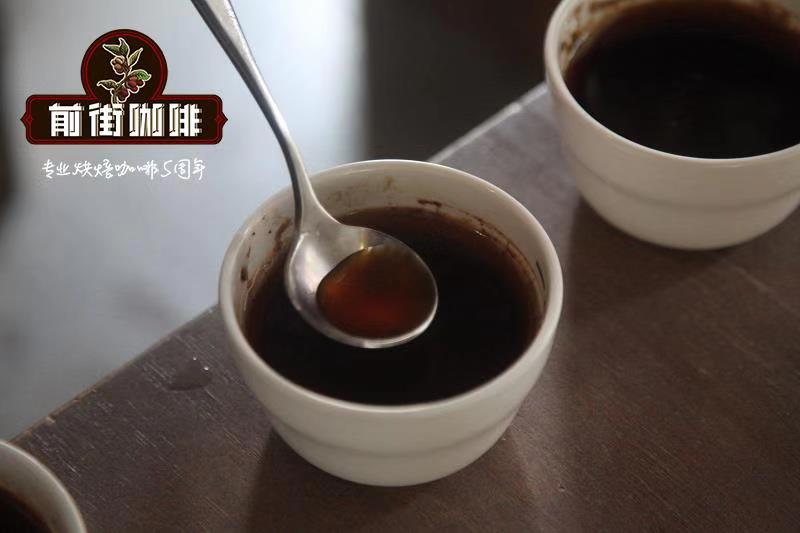In which country is the Costa Rica Goddess Garden introduced?

Professional coffee knowledge exchange More coffee bean information Please pay attention to coffee workshop (Weixin Official Accounts cafe_style)
Front Street Coffee-Costa Rica Goddess Manor Rose Summer Introduction
Costa Rica coffee is grown in volcanic terrains with fertile volcanic ash, mild and moderate temperatures, and stable and abundant rainfall, are one of the factors that make coffee a major agricultural product in Costa Rica, and Costa Rica's high latitudes produce coffee beans that are famous in the world for their rich, mild taste, but extremely acidic, coffee beans here are carefully processed, and it is for this reason that there is high quality coffee.
The Costa Rican coffee harvest season can be divided into two seasons, the dry season is December-April, the coffee harvest time, and the wet (rain) season is May-November. In recent years, micro-treatment plants have been established, because the water consumption is only 5% of that of traditional washing treatment plants, and there is no need for large tanks and exposure fields, the investment required is relatively small. "Honey-treated coffee" with low acidity, increased complexity and sweet aroma has become the target of competition in the coffee industry in recent years.
Costa Rica is located in the south of San José, the capital of Tarrazu. It is one of the most important coffee growing areas in the country. Among the many excellent producing areas in Costa Rica, Tarrazu stands out. Tarrazu is famous in the fine coffee world and is one of the main coffee producing areas in the world.
Tarasu is located in the fertile volcanic region of Central America, where there is a humid climate and fertile volcanic soil, abundant rainfall throughout the year, high altitude, dense forest natural shade, for coffee growth provides a unique growing environment, in the cultivation process does not use pesticides or artificial fertilizers, Tarasu Alpine production of nearly 95% of coffee beans belong to the very hard beans (SHB), generally grown at an altitude of 1500 meters.
Goddess Manor
Located in the Dota region of Costa Rica's best-known tarrazu region, Goddess Manor is known for producing micro-batches of geisha/rose varieties.
In 1865, the Dota region enjoyed the reputation of good Costa Rican coffee, because the road construction extending from the capital to the Dota Valley had to pass through the Tarrazu region, so it was customary for the Costa Rican Coffee Bureau to mark Dota tarrazu in the future. This region is a typical plateau terrain, and both soil and temperature are the best choice for coffee cultivation conditions.
Goddess Manor was founded in the 1960s, and the owner and now very fiery Panamanian Geisha/Rosedale father Pachi Serracin was a very good friend, while Pachi Serracin brought back the Geisha/Rosedale variety at CATIE, Costa Rica's industrial scientific research station for the world's largest coffee varieties and varieties. Goddess Manor grows coffee organically, using native trees and fruit trees as shade for coffee.
The fertilizer used is also coffee cherry fruit and peach mixed molasses, added into the fertile soil with high mineral content in the adjacent mountain area to cooperate with microbial fermentation to prepare organic fertilizer capable of enhancing the disease resistance of coffee value cultivation. California earthworms are also used as cultivation soil, and directly used as the main nutrient source of coffee trees during the fertilization period. A variety of coffee varieties are mixed and planted. All ripe red and purple berries are acquired and the soaking fermentation process is widely controlled. A very unique constant temperature treatment method is developed. Not too much fermentation gives the coffee an excellent balance between clarity and complexity, giving it a more stable flavor that makes people intoxicated.
END
Important Notice :
前街咖啡 FrontStreet Coffee has moved to new addredd:
FrontStreet Coffee Address: 315,Donghua East Road,GuangZhou
Tel:020 38364473
- Prev

How about Panamanian Rosa Coffee? what's the name of Rosa Coffee in Japan?
Professional coffee knowledge exchange more coffee bean information please pay attention to coffee workshop (Wechat official account cafe_style) Qianjie Coffee-Rosa Coffee Variety introduction Rose Summer Coffee is the original species of Arabica species, especially particular about the growth environment, requiring high altitude, cloud shade, fertile soil and enough accumulated temperature. 1931: a team of botanists goes to southwest Ethiopia
- Next

Ethiopia Guixia Village Gori Guixia and Guixia 1931 Coffee Bean Variety Characteristics Flavor Taste Difference
Professional coffee knowledge exchange More coffee bean information Please pay attention to coffee workshop (Weixin Official Accounts cafe_style) Qianjie coffee-Guixia Village coffee and Panama rose summer contrast Guixia Village Gesha Village GoriGesha forest, rose summer seed first discovered
Related
- Beginners will see the "Coffee pull flower" guide!
- What is the difference between ice blog purified milk and ordinary milk coffee?
- Why is the Philippines the largest producer of crops in Liberia?
- For coffee extraction, should the fine powder be retained?
- How does extracted espresso fill pressed powder? How much strength does it take to press the powder?
- How to make jasmine cold extract coffee? Is the jasmine + latte good?
- Will this little toy really make the coffee taste better? How does Lily Drip affect coffee extraction?
- Will the action of slapping the filter cup also affect coffee extraction?
- What's the difference between powder-to-water ratio and powder-to-liquid ratio?
- What is the Ethiopian local species? What does it have to do with Heirloom native species?

